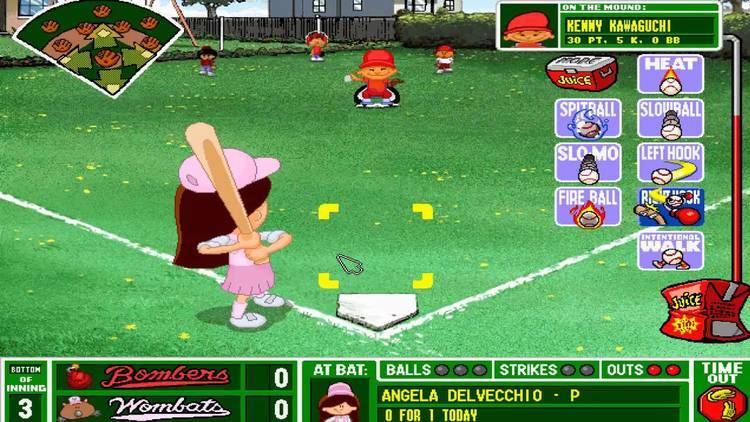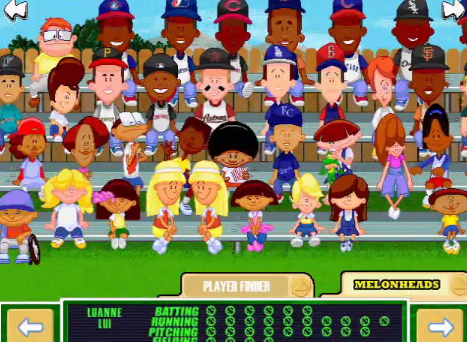Genres Sports Year of inception 1997 | Publishers The Evergreen Group First release Backyard Baseball1997 | |
 | ||
Platforms Nintendo DS, PlayStation 2, Wii, Microsoft Windows, iOS, Xbox 360, Game Boy Advance, Nintendo GameCube, Macintosh Games Backyard Sports: Sandlot S, Backyard Baseball 2007, Backyard Baseball 2005, Backyard Baseball 2001, Backyard Baseball '10 | ||
Backyard baseball part 1 flash jackson jr vs pablo sanchez
Backyard Baseball is a series of baseball video games for children which was developed by Humongous Entertainment and published by Atari. It was first released in October 1997 for Macintosh and Microsoft Windows. Later games were featured on Game Boy Advance, PlayStation 2, GameCube, Wii, and iOS. There have been eleven different versions of the game since 1997. Some of the game titles that were created include Backyard Baseball, Backyard Baseball 2001-2010, and Backyard Sports: Sandlot Sluggers.
Contents

The original game consisted of 55 neighborhood kids which the gamer could choose to play. Over the years, the idea of "Pro players as kids" became popular, and the original statistics and looks of the players changed. Some of the professional players that were available included Chipper Jones, Frank Thomas, Alex Rodriguez, Alfonso Soriano, Ichiro Suzuki, Sammy Sosa, Jim Thome, Albert Pujols, Nomar Garciaparra, Ken Griffey Jr., and Barry Bonds. As the game progresses, there are some professionals that become available or “unlockable” including Randy Johnson, Derek Jeter, and Mike Piazza.

In Backyard Baseball, players take a managerial role by creating a team of different players to compete against opponents. In the different installments, a player could play an exhibition game or a 14, 16 or 32 game season (different versions vary) followed by the “Backyard Baseball League” playoffs, which contains the American League and National League divisional series, the AL and NL championship series and finally the “Backyard Baseball World Series”. Series games will vary per game.

This game has various playable modes, they include: Single Game, Batting Practice, Spectator, and Season Game
Backyard Baseball attempts to recreate the experience of playing baseball as children.
In 2013 "The Evergreen Group" acquired the IP from Atari.
Power-Ups

Sometimes accompanying the four standard batting modes (Power, Line Drive, Grounder and Bunt), some beneficial power-ups appear. In the original Backyard Baseball, these batting power-ups appeared when the player got a hit when the computer used a "crazy pitch" (see below). Starting from Backyard Baseball 2001, the power ups were awarded after a hit off a "crazy pitch" and when the player turned a double play or triple play on defense. In addition to these batting power-ups, pitching power-ups, or "crazy pitches," also progressively appear, though they are much more frequent and in number, occurring whenever the player strikes an opponent out. These pitches consume much more energy and causes the strike zone to expand, so most of the pitches given are never used consecutively. In addition to the "crazy pitches," a strikeout may also award the player "More Juice," a full energy recharge for the pitcher that can be used when the player sees fit to use it.
Backyard Baseball 2001
Batting Power-Ups

Pitching Power-Ups

Backyard Baseball 2005
Batting Power-Ups
Pitching Power-Ups
